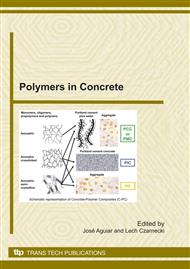p.1
p.15
p.21
p.29
p.37
p.47
p.57
p.65
Seven Well Known Fundamental Flaws against Innovations in Construction Chemistry
Abstract:
Construction chemistry is underdeveloped compared to other chemical branches. Innovation is realized by new products, improved pro¬cesses or / and more efficient organization. Innovation becomes evident when a noticeable progress is achieved by implementing changes. There are seven fundamental hindrances or flaws possible which are briefly considered. The state-of-the-art must be known. Innovation is measured in comparison to this state-of-the-art. If this level is not yet attained, progress is easily realized by introducing the actual knowledge. The realization is measured according to qualitative or preferably quantitative bench¬marks. Unfortunately, this is not currently done in the field of construction chemistry. Before benchmarking starts, communication based on truth and trust must be effective. The available scientific me¬tho¬dology must be known. Benchmarking will possibly show deficiencies in education and training. This will stress the need for adequate trans¬parency to improve efficiency. Hope¬ful¬ly, a self-regulating process improving pro-ducts and processes will be created in this way.
Info:
Periodical:
Pages:
15-19
Citation:
Online since:
January 2011
Authors:
Keywords:
Permissions:
Share:
Citation:


